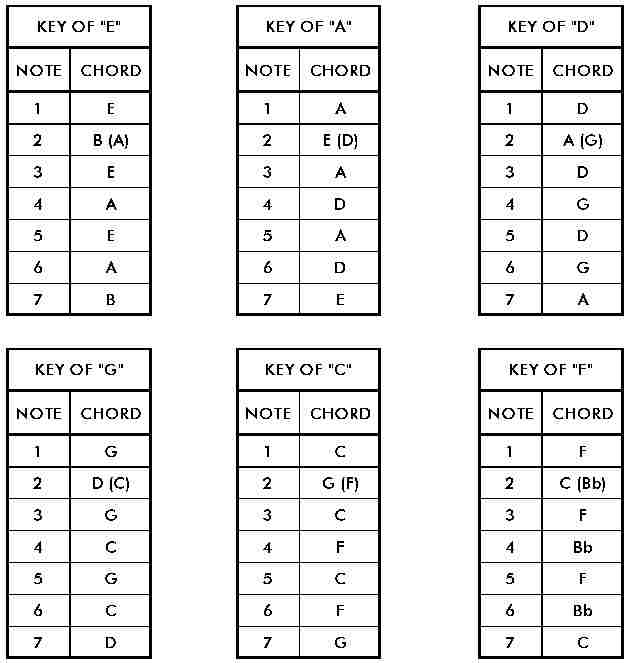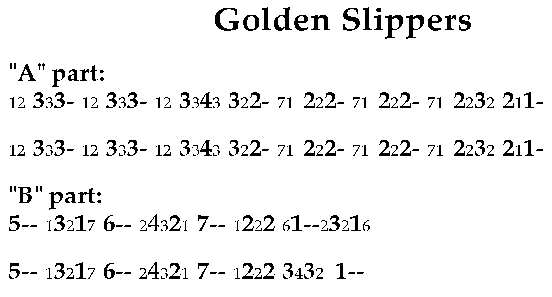
c 1996 by Paul Goelz
Origianlly presented in 1996 at the Midland Dulcimer Festival, and then in 1997 at the ODPC FunFest
OK, here we go. This "system" is something I have developed in response to the need for something to teach people how to figure out the correct chord for the music they are playing. Unfortunately, it seems to be kinda like teaching how to whistle.... there ain't no way! So I sat down and tried to see if I could sort out what my brain was doing when it heard music and predicted chords.
And I came up with the following system. It seems to work fine, but you can't do it in your head and play at the same time. Not enough parallel processing power or something like that. However, you CAN do it on paper or very slowly, and figure out how it works that way. Maybe after a while you can get it up to speed?
Basically, I have found that there are certain chords that are correct for certain notes in any given scale. If the major beat in a measure falls on any given note, you play the associated chord on that beat and on subsequent beats until the major beat falls on a note that is associated with a different chord.... and then you change to that chord.
To avoid having to memorize all the note/chord associations literally, I have assigned a number to each note in the scale, like the Chinese musical notation system.
To use, do this:
1. Find the key the tune is being played in (not covered here.... sorry!)
2. Find the notes in the tune and assign the corresponding numbers. Example: DO, RE, MI would be represented as 1, 2, 3 and so on.
3. Identify the note that each major beat falls on.
4. Play the chord shown in the appropriate chart below for that note on that beat and continue until the major beat falls on a note corresponding to a different chord.
Note that there is a choice between two chords on the "2" note of each scale. The correct chord is not predictable here. Use your ear!


I have assigned all the numbers to the notes in Golden Slippers. The major accented beats are designated by large numbers. Simply pick a key and then play the chord from the appropriate chart associtated with the bolded note on each accented beat and you're there. Of course, this can get a bit boring, so try skipping beats, etc. However, whenever you play something, you will play the chord associtated with the note on the beat that you play.
It works.... just not fast enough. But try it and see what you think!
See also my fifth tuned hammered dulcimer chord chart